The Most Common Types of Kale and How to Cook with Them
Kale may be the hottest vegetable since, well, ever. Whether you credit the "Keep Calm and Kale On" memes all over the internet or Beyoncé's legendary KALE sweatshirt, one thing's for sure: This leafy green is now a cultural icon.
But if you're going to sport a cheeky "Don't kale my vibe" t-shirt, you've got to get your kale facts straight-including that there are multiple types of kale. Yes, really. (Here are other surprising things you might not know about kale.)
While all kales are packed with vitamins and minerals (like vitamin K and iron), knowing your kale varieties can make adding this veg to your diet even easier. Here, the most common types of kale and how they can best kale up your life.
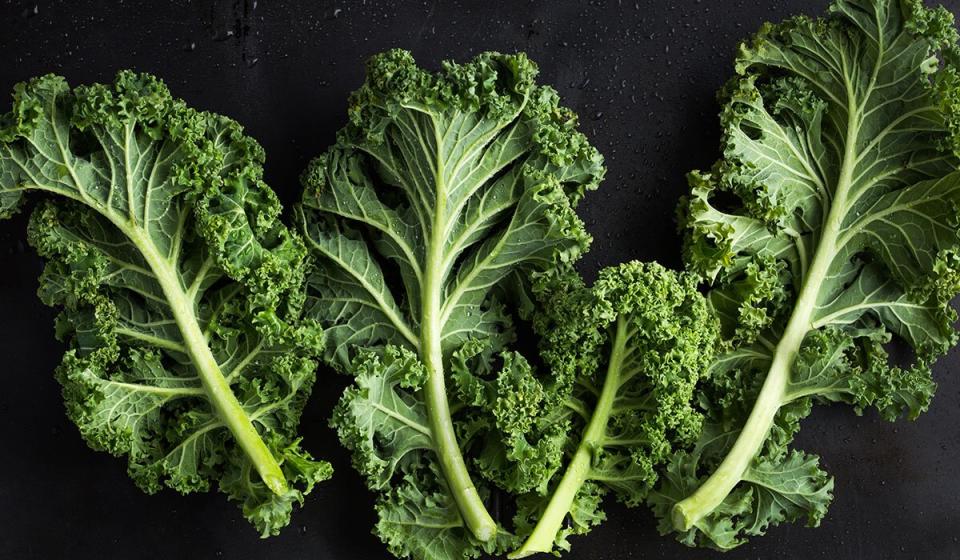
Photo: Anna Shepulova / Shutterstock
Curly Kale
Best for: Chips and general cooking
Curly kale is the most common-you've likely seen it as decoration on your plate at a restaurant, in salads, and sautéed. But even if it's #basic, curly kale still deserves recognition.
"This kale, as most kale, is high in potassium, vitamin B6, and many other antioxidants, has a very peppery taste, and is slightly bitter/tangy," says registered dietitian Mariana Daniela Torchia, Ph.D. Like all other kales, it's also high in vitamins K, C, and B as well as fiber and antioxidants. (It even has more vitamin C than an orange!)
It's the typical kale you find in the grocery store, packaged in bags or boxes or in bunches in the fresh produce section. It's dark green with curly edges on each leaf and it has super-tough stems (which you generally want to remove before cooking or eating). Since it's a bit tougher than other kales, you'll need to massage it with some citrus or acidic substance to break it down if you're eating in raw, like in a salad.
Because this type of kale is less crinkly than other kales and because the curly edges get crispy in the oven, you can make some great kale chips with this type, she says. (Try this easy kale chips recipe if you haven't already.)
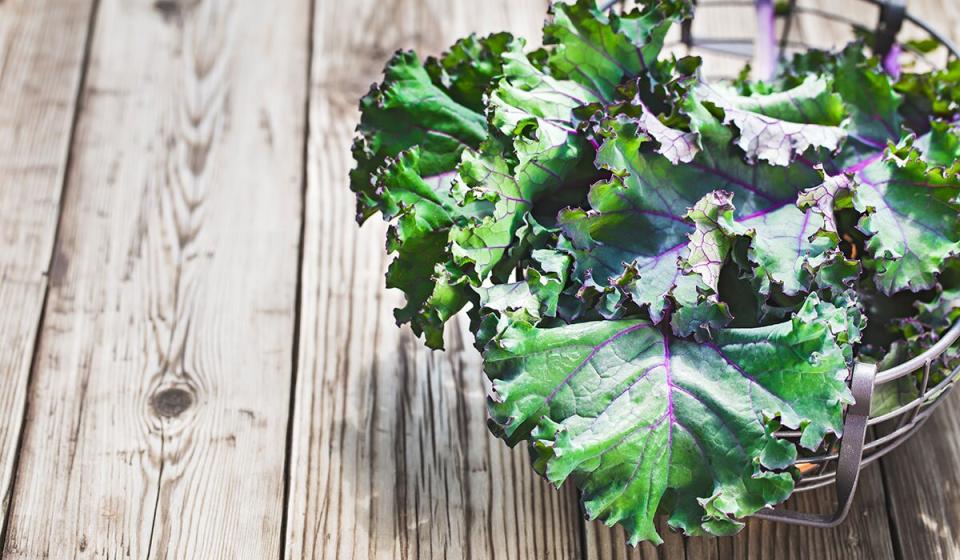
Photo: Yingko / Shutterstock
Red (or Red Russian) Kale
Best for: Smoothies and salads
Red kale or red Russian kale has a very similar taste to curly kale but-you guessed it!-often has red-hued stems. The leaves are flatter than those of curly kale (resembling arugula leaves) and can be green or gray-green in color. Red kale is often considered the sweetest kale, which makes it perfect for eating raw.
Use it in juices, smoothies, and salads-just massage and soften the leaves with your hands to break down the fiber and make it easier for digestion, says Torchia. Also, cut off the thick bottom stems, since they're very chewy and bitter, she says. (Though it's totally safe to eat, if you want to; just cut it into small pieces and simmer.)
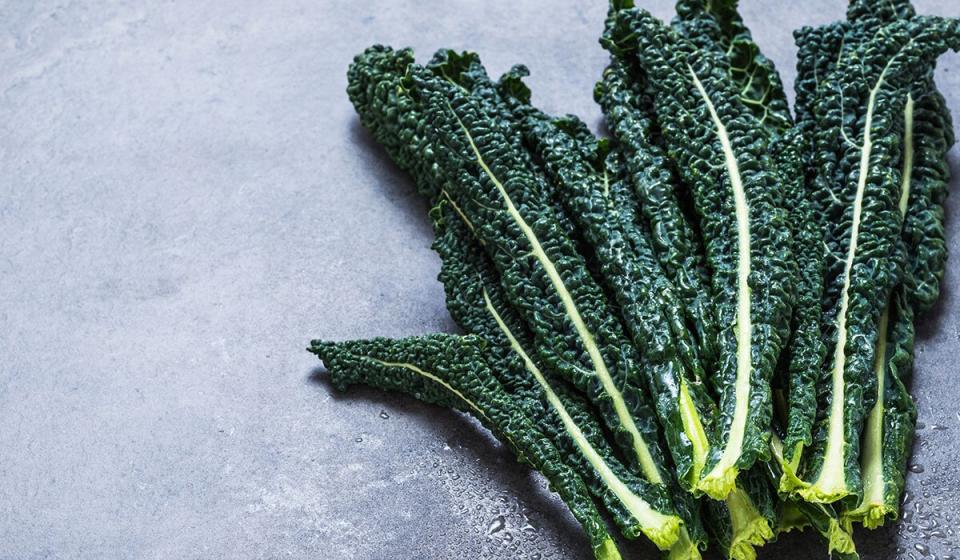
Photo: Leonori / Shutterstock
Lacinato (or Tuscan or Dinosaur) Kale
Best for: Salads and cooking
This kale is super dark in color, a bit thinner in texture and appearance, and has wrinkles (but not curls). "Great cooked and raw for salads, but it has thinner leaves so it's easier to eat than other kale sorts, which are tougher," she says. It'll be a bit richer in flavor and chewier than other kales.
To eat it, remove the stems and massage the leaves (this is always a good idea because it begins the process of breaking down fiber), she says. "For a salad, try cutting it into thin strips and add a favorite oil with chili flakes and pressed garlic," she says. Optional: Add a little bit of balsamic vinegar, since the acid of the vinegar helps to soften the kale leaf, she explains.
It has a tannin-like taste, but it lessens once cooked-so if it proves to be too intense in a salad, you can cook it for a sweeter and milder taste, she says.
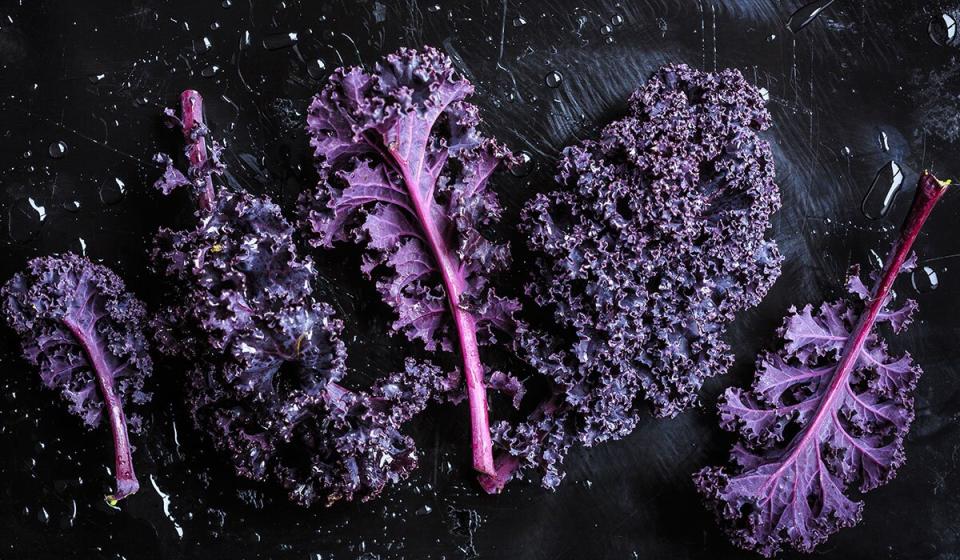
Photo: Quanthem / Shutterstock
Redbor Kale
Best for: Soups or sautéing
Redbor kale is a statement-maker: It has a deep purple color and super-curly leaves. But no noshing on raw redbor kale, unless you want a stomachache. "You would want to cook this one since it's dense and needs to be softened in soups or simmered in broth for a great taste," she says.
Simply toss it in a soup and simmer to soften, or sauté a quick side dish: Add 2 tablespoons of olive oil, two tablespoons of apple cider vinegar, 1/8 teaspoon of salt, and massage the leaves until they wilt a bit. Add a little pepper and garlic powder for taste, then sauté, and you're done.
This kale also contains an antioxidant called alpha-lipoic acid (ALA), that may help lower blood sugar in people with diabetes, and boost heart health, says Torchia. Bonus: It also makes a great topper for pizzas and flatbreads, since its color makes it an excellent Instagram-able garnish.
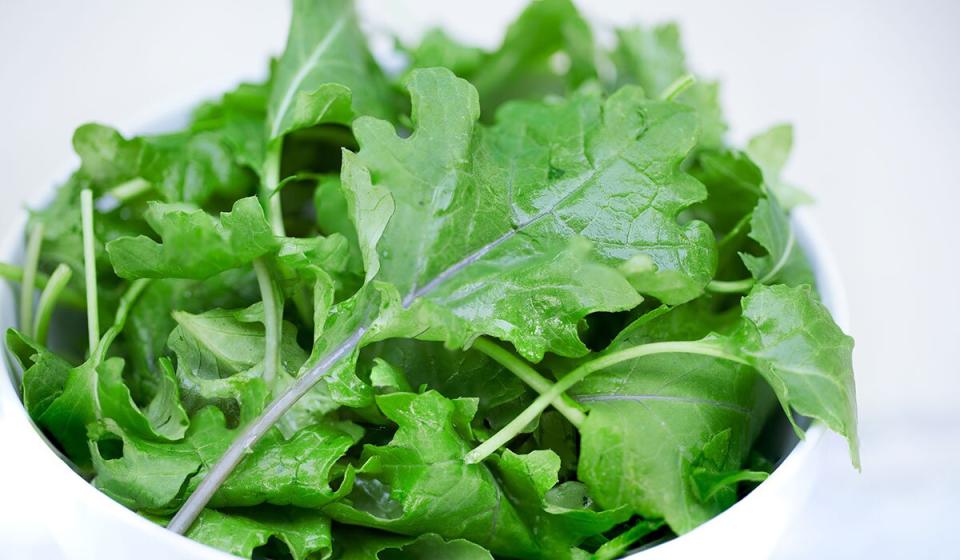
Photo: Dori Dumrong / Shutterstock
Baby Kale
Best for: Salads or smoothies
Baby kale is one of the easiest kales to find at the store (usually in pre-packaged boxes or bags, near the salad greens) and is also, arguably, the easiest to use. It's similar to curly kale in terms of appearance and taste, but its leaves are much smaller and thinner in texture-so you won't need to massage it as you would with curly kale, says Torchia.
Because baby kale is so tender, it's great for eating raw. You can use it for smoothies and salads or as a garnish. If you choose to cook it, it doesn't need nearly as much time as other kales-and you may want to reconsider cooking it at all, since it'll cook down, like other baby greens.

